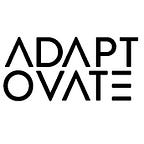Four Top Traits for an Agile Leader — ADAPTOVATE
Before we discuss four top traits for an Agile leader, first let’s discuss psychological safety. It’s the fundamental construct that all team members must have (Agile or not) and it starts with the foundations laid out by organisation leaders.
PSYCHOLOGICAL SAFTEY AND INCLUSION in AGILE TEAMS
One of THE most important aspects of the modern leader (if not the most important) is to ensure team members feel they are working in a ‘psychologically safe’ team environment. What does this mean? Amy Edmondson from Harvard University, first established this construct in 1999 in her paper Psychological Safety and Learning Behaviour in Work Teams. In it she defined it as, “a shared belief held by members of a team that the team is safe for interpersonal risk taking.”
What does this mean in Agile? In an agile environment, an Agile team member feels like they can ask lots of questions and not be judged. They feel safe to take risks. They should expect other team members value their unique skills and perspectives and that they are not only respected, but utilised. In order for all that to happen, the Agile team needs a leader who authentically values all those things.
Dr Karen Morely, an executive coach and author on leadership suggests these simple reflections in her article:
- Is identity threat a possibility in your team?
- How do you manage team safety?
- Are pro-diversity beliefs articulated in your group?
- What might you do/encourage others to do to increase safety?
Pride month and inclusion
Inclusion is a bit part of psychological safety in the workspace — and it’s particularly heightened presently, as the US celebrates Pride month throughout June. It’s non-negotiable that minority LGBT+ members of an Agile team must feel safe, as well of course all other minority members of our community.
This leads us to the first of our TOP TRAITS FOR AN AGILE LEADER
1. BECOME AN ENABLING LEADER
“A common theme of leaders is that they begin to realise that when Agile Operating Models bring people together for conversation, the real work happens,” says Steve Walton, principal in our Australian office.
Leaders want to understand and empower however are often buried behind process and documentation. Processes like Quarterly Business Review planning brings together stakeholders, delivery leaders and financial controllers to rapidly align on priorities and make funding decisions in an interactive and transparent way.
“A term that I am using more this year is “enabling leader”. I am seeing leaders being more engaged and offering their knowledge and capability, to be proactive in helping teams find their path forward. This is an uplift from a few years ago where the focus was on responding to the needs of the team.”
2. BELIEVE IN TEAM
“The successful leaders look for opportunities to align skills and capabilities with organisational objectives without prescribing tasks or activities. The best leaders look for ways to help their teams acquire and hone skills, and they defer to their teams to determine the way forward in pursuit of the organisation’s objectives,” says Patrick Fitzgerald, senior consultant in our USA office.
One common attribute amongst successful Agile leaders is an unwavering belief in the capabilities and growth potential of their teams. On the one hand, the leaders are cognisant of their strategic objectives. On the other hand they are acutely aware of the wealth of knowledge and collective capability that their teams possess.
3. BE OUTCOME DRIVEN
Nikhil Josh, a consultant in our Canadian office, says, “Some leaders get Agile and are very supportive and engaged. They provide their teams with the necessary autonomy to be high performing. Other leaders still possess a command and control mentality engrained in everything they do.”
A part of this is driven by how they are compensated. When the switch takes place to compensate leaders by value or outcomes delivered instead of strictly outputs, the change in thinking and approach evolves rapidly and it aligns better with the Agile mindset of outcomes over output.
4. BE AGILE, don’t do Agile. It’s a continuum
Read more Leadership articles from ADAPTOVATE here.
“Plasticity, or an openness to new situations and challenges, has been the most common characteristic of leaders. Leaders who execute an org design successfully,” believes Brooke Pannell, a consultant in our USA office. In other words, leaders who “are” agile, not just “do” agile.
In Dr Tara Stewart’s book Neuroscience for Leadership, she discusses research that’s shown our brains change throughout our lives. Called neuroplasticity, it’s observed in some of our most famous modern leaders from Jeff Bezos to Steve Jobs. The ability to re-wire the brain and have as Brooke says, an “openness” to change, is crucial in top decision-makers.
Of course, these four top traits for Agile leaders aren’t an exhaustive list. However they are four key elements that every leader must have.
Thankyou to the following contributors
Steve Walton, Principal
Patrick Fitzgerald, Senior Consultant
Brooke Pannell, Consultant
Nikhil Josh, Consultant
Originally published at https://www.adaptovate.com on May 31, 2021.
